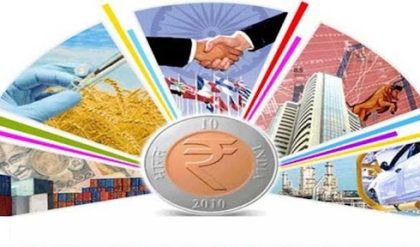Gender Inequality Index
The Gender Inequality Index (GII) is a new index that was introduced in the 2010 Human Development Report’s 20th anniversary edition by the United Nations Development Programme (UNDP) for the measurement of gender disparity. According to the UNDP, this index is a composite measure which captures the loss of achievement within a country due to gender inequality and uses three dimensions to do so: (i) Reproductive health, (ii) Empowerment, and (iii) Labour market participation. The new index was introduced as an experimental measure to rectify the shortcomings of the previous, and no longer used indicators, the Gender Development Index (GDI) and the Gender Empowerment Measure (GEM), both of which were introduced in the 1995 Human Development Report.
· The GII’s dimension of reproductive health has two indicators: (i) The Maternal Mortality Ratio (MMR) and (ii) The Adolescent Fertility Rate (AFR)
· The empowerment dimension is measured by two indicators: (i) The share of parliamentary seats held by each sex and (ii) Higher education attainment levels
· The labour market dimension is measured by women’s participation in the workforce. This dimension accounts for paid work, unpaid work, and actively looking for work. According to the Human Development Report 2011, India ranks 129 out of 146 countries on the Gender Inequality Index, below Bangladesh and Pakistan, which are ranked at 112 and 115, respectively
· Among BRICS (Brazil, Russia, India, China, South Africa) nations, India has the highest inequalities in human development
Multidimensional Poverty Index
The Multidimensional Poverty Index (MPI) was developed in 2010 by Oxford Poverty & Human Development Initiative and the United Nations Development Programme and uses different factors to determine poverty beyond income-based lists. It replaced the previous Human Poverty Index.
The MPI is an index of acute multidimensional poverty. It shows the number of people who are multidimensionality poor (suffering deprivations in 33.33% of weighted indicators) and the number of deprivations with which poor households typically contend. It reflects deprivations in very rudimentary services and core human functioning for people.
The index uses the same three dimensions as the Human Development Index: (i) Health, (ii) Education, and (iii) Standard of living. These are measured using 10 indicators.
| Dimensions | Indicators |
| Health | · Child Mortality· Nutrition |
| Education | · Years of school· Children enrolled |
| Living Standards | · Cooking fuel· Toilet· Water· Electricity· Floor· Assets |
Technological Achievement Index (TAI)
The Technology Achievement Index (TAI) is used by the UNDP (United Nations Development Programme) to measure how well a country is creating and diffusing technology and building a human skill base, reflecting capacity to participate in the technological innovations of the network age. The TAI focuses on four dimensions of technological capacity: (i) Creation of technology, (ii) Diffusion of recent innovations, (iii) Diffusion of old innovations, and (iv) Human skills.
· Technology creation: Measured by the number of patents granted to residents per capita and by receipts of royalties and license fees from abroad per capita
· Diffusion of recent innovations: Measured by the number of Internet hosts per capita and the share of high-technology and medium-technology exports in total goods exported
· Diffusion of old innovations: Measured by telephones (mainline and cellular) per capita and electricity consumption per capita
· Human skills: Measured by the mean years of schooling in the population aged 15 and older and the gross tertiary science enrolment ratio
Human Development Index (HDI)
The Human Development Index (HDI) is a composite statistics of life expectancy, education, and income indices to rank countries into four tiers of human development. It was created by economist Mahbub-ul-Haq (1995) followed by economist Amartya Sen, published by the United Nations Development Programme.
In its 2010 Human Development Report, the UNDP began using a new method of calculating the HDI. The following three indices are used:
1. Life Expectancy Index
2. Education Index: It includes
I. Mean Years of Schooling Index
II. Expected Years of Schooling Index
3. Income Index (Standard of Living)
Here is the current HDI Index for 2014:







Comments are closed.